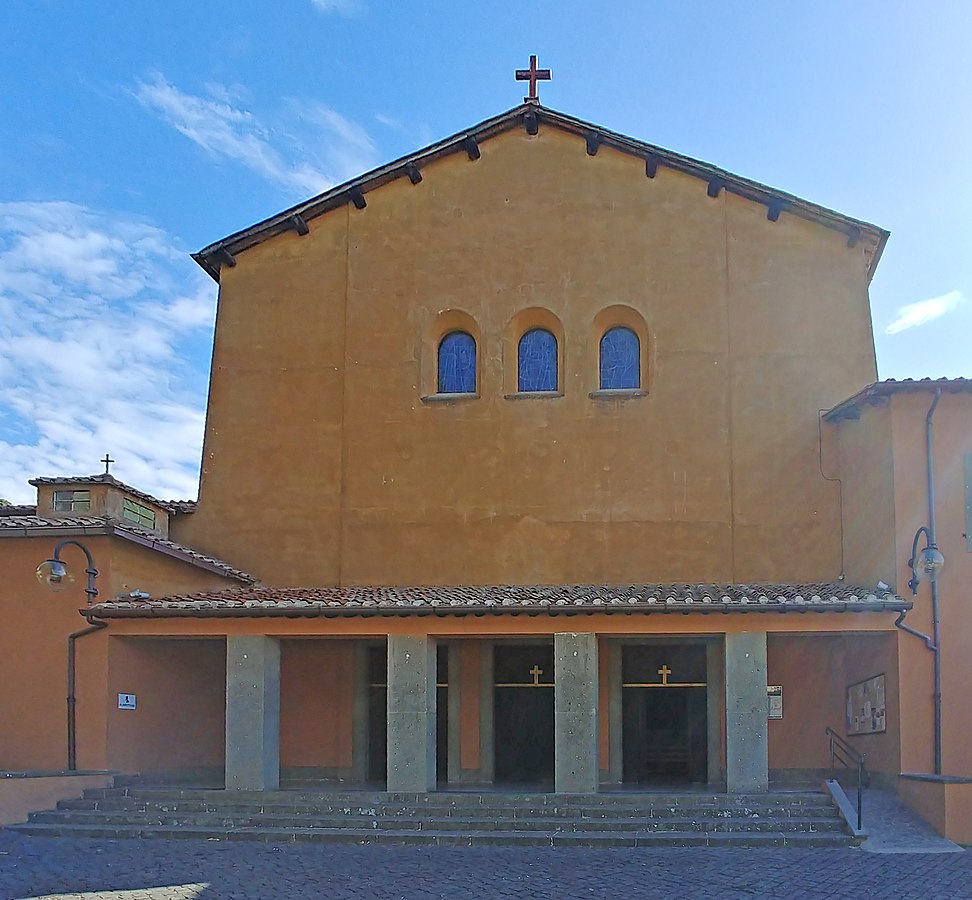Halloween is almost here! In the spirit of the spooky season, here are ten historic cemeteries in Italy worth a visit:
1. CEMETERY OF SAN MICHELE, VENICE
San Michele is a Venetian Island dedicated almost exclusively as a cemetery. Mauro Codussi’s Chiesa di San Michele of 1469, the first Renaissance church in Venice, and a monastery also lie on the island. Among those buried in the cemetery are Igor Stravinsky, Joseph Brodsky, Jean Schlumberger, Christian Doppler, Frederick Rolfe, Horatio Brown, Sergei Diaghilev, Ezra Pound, Luigi Nono, Catherine Bagration, Franco Basaglia, Paolo Cadorin, Zoran Mušič, Helenio Herrera, Emilio Vedova, and Salvador de Iturbide y Marzán. Contrary to common what one might think, author Giacomo Casanova, although a Venetian native, was buried in the Czech Republic. The cemetery currently contains seven war graves from World War I of officers and seamen of the British merchant and Royal Navy. Aspasia Manos was initially interred at this cemetery, but her remains were later transferred to the Royal Cemetery Plot in the park of Tatoi Palace.
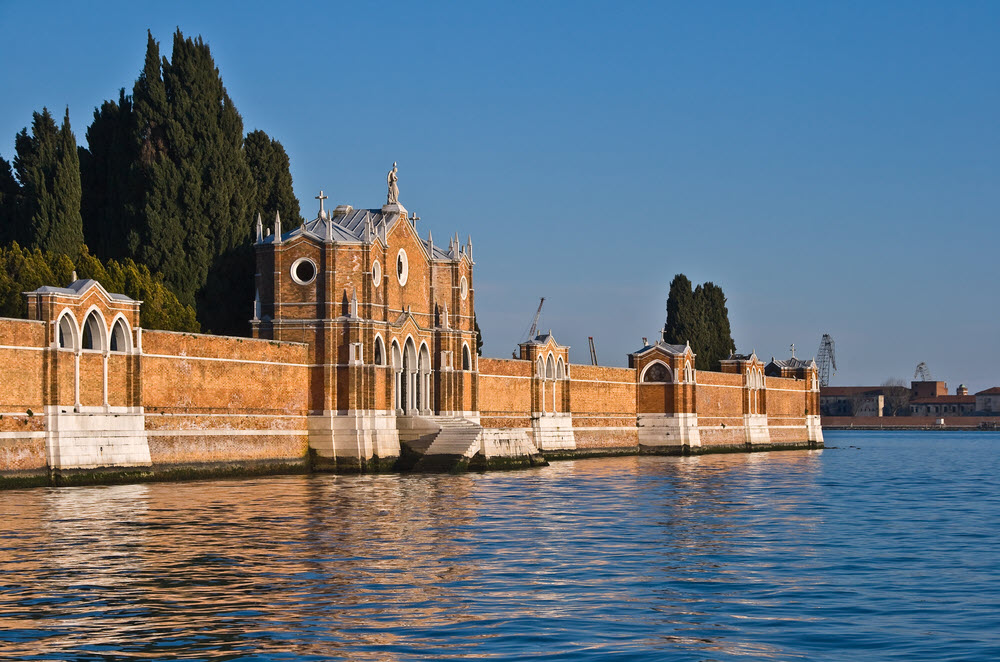
2. NON-CATHOLIC CEMETERY, ROME
Often referred to as the Protestant Cemetery, the Non-Catholic Cemetery of Rome is a beautiful and solemn place to visit in the city center. The cemetery is located near near Porta San Paolo and adjacent to the Pyramid of Cestius, a small-scale Egyptian-style pyramid built between 18 and 12 BC as a tomb and later incorporated into the section of the Aurelian Walls that borders the cemetery. The cemetery boasts Mediterranean cypress, pomegranate, and other trees, as well as a grassy meadow. The earliest known burial here is that of an Oxford student named Langton in 1738. The English poets John Keats and Percy Bysshe Shelley are buried here as well.
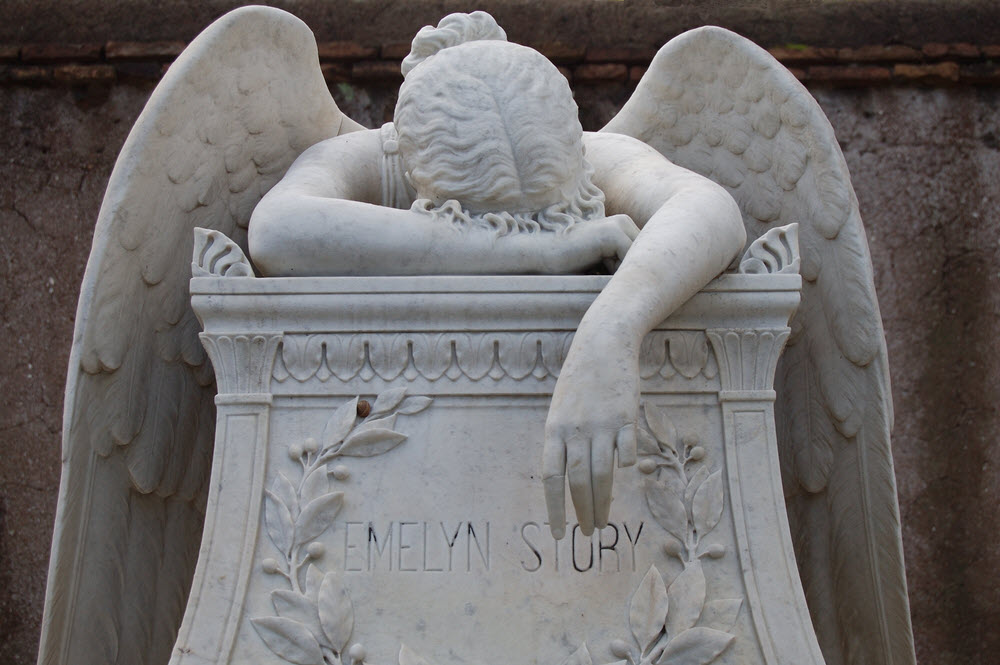
3. MONUMENTAL CEMETERY OF STAGLIENO, GENOA
The Monumental Cemetery of Staglieno in Genoa is an extensive plot of land located on a hillside in the Genovese district of Staglieno. Famous for its sculptures and covering an area of just over a square kilometer, it is one of the largest cemeteries in all of Europe. Over time there were several extensions and the cemetery now includes sections for an English cemetery as well as Protestant and Jewish areas. At the center of the site is a tall statue of Faith, sculpted by Santo Varni. Facing the statue, up a grand staircase, is a domed Pantheon (a model after the one in Rome) flanked by two marble statues of the prophets Jeremiah and Job. The cemetery contains the graves of Oscar Wilde’s wife Constance Lloyd, Ferruccio Parri, Fabrizio De André, Nino Bixio, Michele Novaro, and Giuseppe Mazzini. Significant sculptors with work here include Leonardo Bistolfi, Augusto Rivalta, Giulio Monteverde, Eugenio Baroni, Edoardo Alfieri and Vittorio Lavezzari. Additionally, Mark Twain briefly praises the cemetery in his Innocents Abroad. Friedrich Nietzsche visited the cemetery frequently in the 1880s with his friend Paul Ree and had many long philosophical discussions as they strolled through the funereal colonnades here.
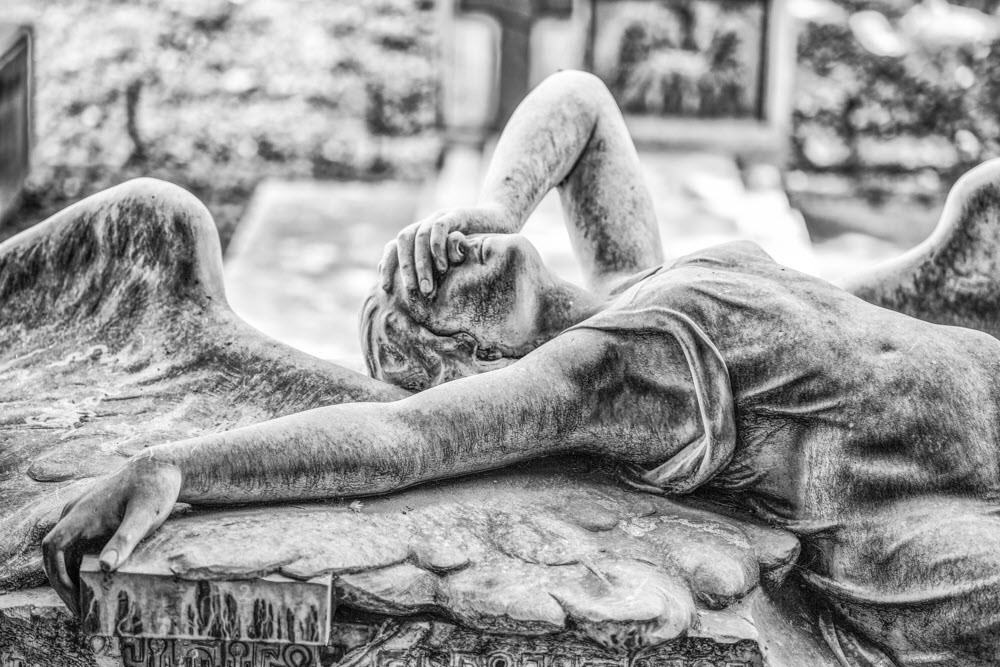
4. MONUMENTAL CEMETERY OF THE CERTOSA OF BOLOGNA
This monumental cemetery was established in 1801 reusing the pre-existing structures of the monastery of Certosa di San Girolamo di Casara. Inside the cemetery you can admire a vast repertoire of sculptural works. Among the artists represented are Giacomo De Maria, Lorenzo Bartolini, Giovanni and Massimiliano Putti, Mario Sarto, Alessandro Franceschi, Pietro Tenerani, Cincinnato Baruzzi, Carlo Chelli, Giovanni Duprè, Vincenzo Vela, Giovan Battista Lombardi and many others. Some of the famous artists who painted frescos and portraits in the cemetery were Pietro Fancelli, Flaminio Minozzi, Antonio Basoli and Pelagio Palagi.
5. MONUMENTAL CEMETERY, PISA
The “Campo Santo di Pisa” can be translated as the “holy field of Pisa” as it is said to have been built on a shipload of sacred soil from Golgotha which was brought back to Pisa from the Third Crusade by Ubaldo Lanfranchi, the archbishop of Pisa in the 12th century. A legend claims that bodies buried in this soil will rot in just twenty four hours! The burial ground lies over the ruins of the old baptistery of the church of Santa Reparata, once standing where the current cathedral now lies. The construction of this huge cemetery began in 1278 by the architect Giovanni di Simone who died in 1284 after Pisa was defeated in the naval battle of Meloria against the Genoans. The cemetery wasn’t completed until 1464.

6. FONTANELLE CEMETERY, NAPLES
The Fontanelle cemetery in Naples is located in a cave in the hillside in the Materdei section of the city. By the time the Spanish moved into the city in the early 16th century, there was already concern over where to locate cemeteries, and moves had been taken to locate graves outside of the city walls. Many Neapolitans, however, insisted on being near their local churches and cemeteries. To make space in the churches and cemeteries for the newly interred, undertakers started removing earlier remains outside the city to the cave, the future Fontanelle cemetery. The remains were interred shallowly and then joined in 1656 by thousands of anonymous corpses, victims of the great plague of that year.
7. MONUMENTAL CEMETERY, PERUGIA
The monumental cemetery of Perugia is located in Via Enrico dal Pozzo, near the Templar church of San Bevignate. It was inaugurated in 1849 by the Archbishop Gioacchino Pecci, future Pope Leo XIII. The graves and chapels of important families from Perugia comprise true masterpieces of funerary art. Of particular historical and architectural interest is the chapel Vitalucci by sculptor Romano Mignini, modeled as an Egyptian pyramid.
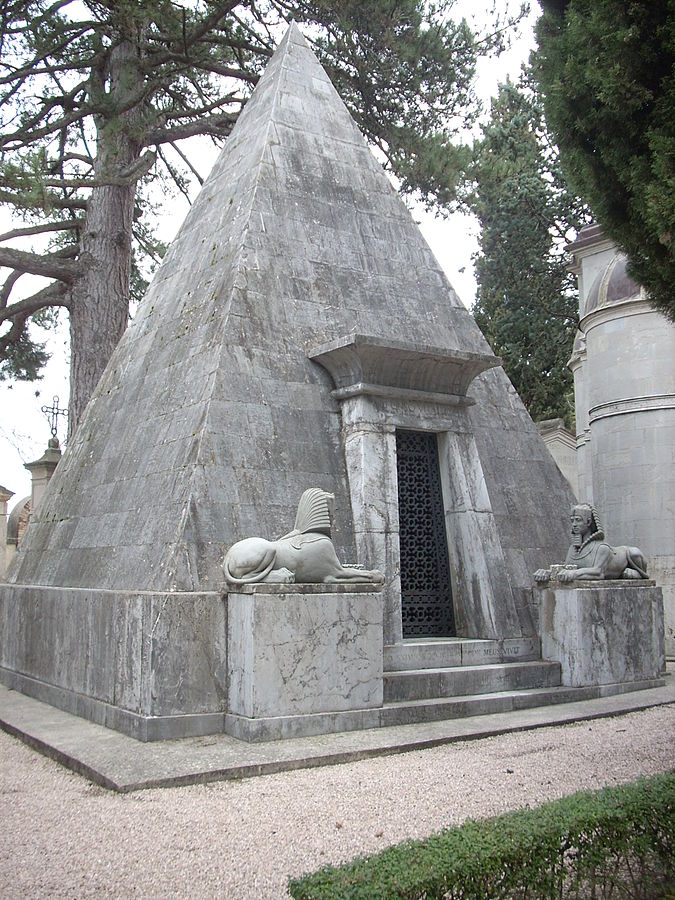
8. MONUMENTAL CEMETERY, MESSINA
On March 22, 1872 the transfer of the remains of famous Messinian citizen Giuseppe La Farina from Turin to Messina marked the inauguration of the beautiful Monumental Cemetery of Messina. The cemetery is composed of a garden of physical art from which sculptors, painters, plasterers, and architects of the time could showcase their mastery to the public. The cemetery’s “Famedio” is a memorial chapel crossed by an underground tunnel (resembling a typical Italian catacomb) and contains the remains of famous historic Messinian citizens. There you can find cenotaphs and burials of Giuseppe La Farina, Felice Bisazza, and Giuseppe Natoli, among others.
9. MONUMENTAL CEMETERY, TURIN
In 1827, the mayor of Turin, Marquis Tancredi Falletti of Barolo, contributed to the project of the Monumental Cemetery of Turin with a large monetary donation. The project was approved in the “Half Moons” area of Turin, attaining its name from the park which stood there until it was destroyed by French Troops in 1706. The Monumental Cemetery of Turin was officially opened in November 1829 and currently occupies an area of about six square kilometers. The cemetery is home to Turin’s historic celebrities and numerous works of art from Bistolfi, Calandra, Canonica, Fumagalli, Rubino, and many others. Many historically famous writers, statesmen, historians, politicians, artists, and even athletes who trace their history to Turin now rest here.

10. CEMETERY OF PARROCCHIETTA
In comparison to the aforementioned illustrious and grand cemeteries, the Cemetery of Parrocchietta in Rome is a very small, quaint burial ground. Located under Via Portuense’s huge concrete pillars by the intersection of Via Isacco Newton, this hidden cemetery was built in 1855 when an epidemic of cholera made it necessary to extend the graveyard of the nearby church of Santa Maria del Carmine e San Giuseppe al Casaletto. It consists of just one square of grass with a line of graveyards in the middle and more tombs aligned along the surrounding wall. Since the beginning of the 1990s, new burials have not been allowed in the cemetery, and so it is rare to find someone else wandering around it. If you are looking for a quiet, peaceful graveyard in Rome, this is perfect for you! (Pictured above: The church of Santa Maria del Carmine e San Giuseppe al Casaletto.
